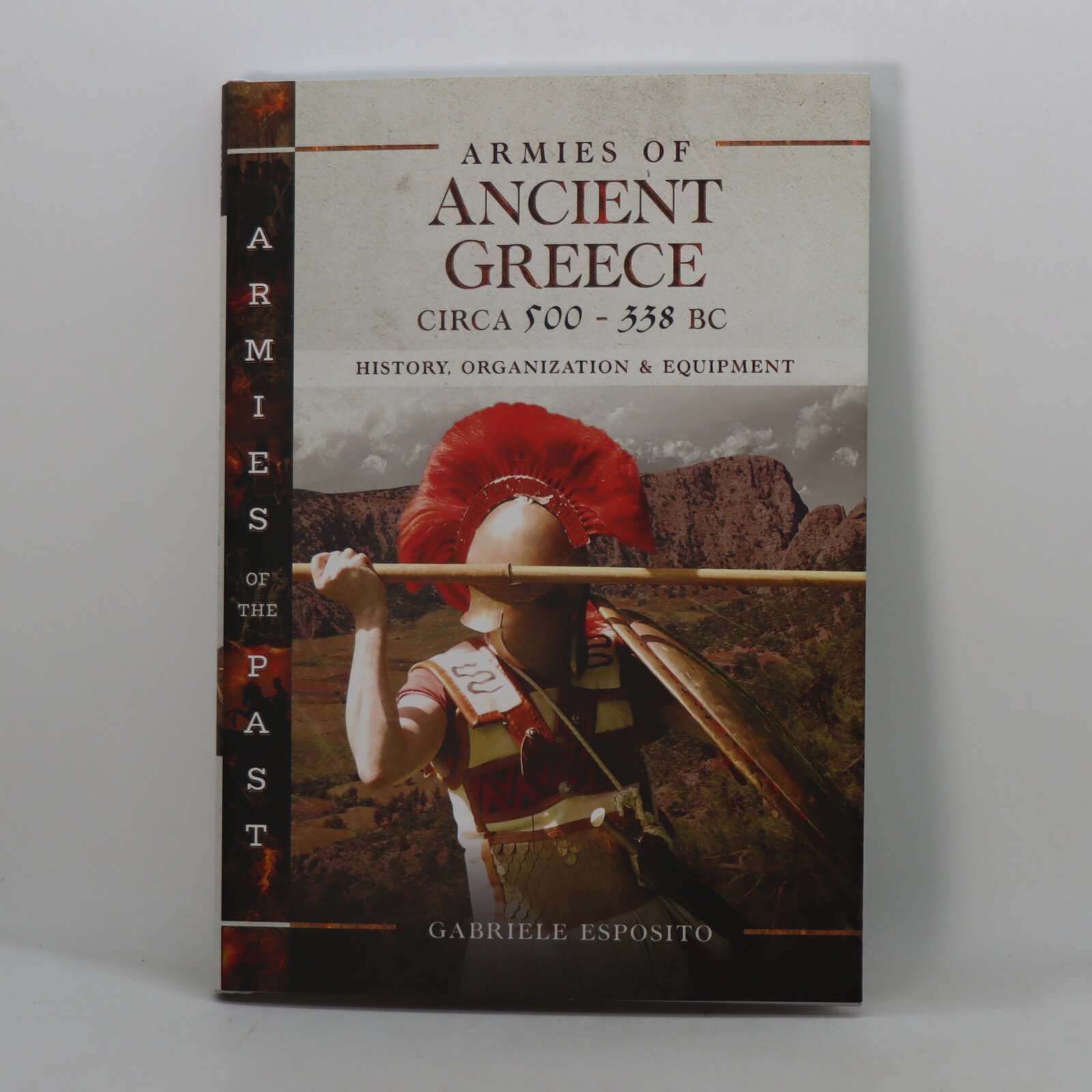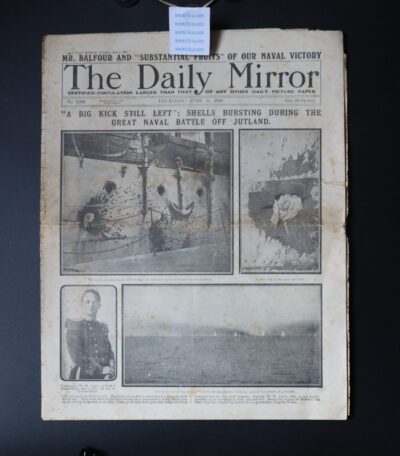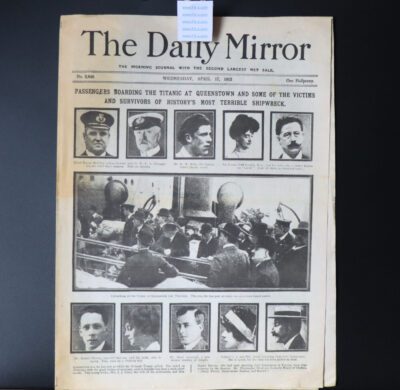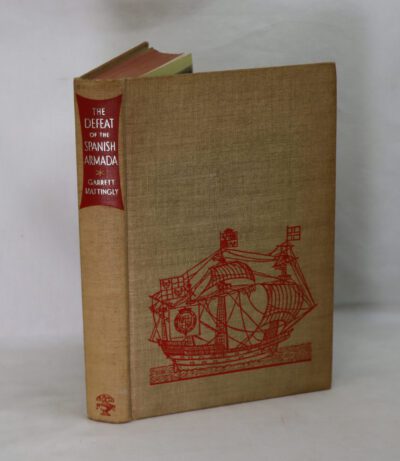Armies of Ancient Greece.
By Gabriele Esposito
ISBN: 9781526751904
Printed: 2020
Publisher: Pen & Sword Military. Barnsley
Edition: First edition
| Dimensions | 18 × 26 × 2 cm |
|---|---|
| Language |
Language: English
Size (cminches): 18 x 26 x 2
Condition: As new (See explanation of ratings)
Your items
Item information
Description
In the original dustsheet. Grey cloth binding with red title on the spine.
F.B.A. provides an in-depth photographic presentation of this item to stimulate your feeling and touch. More traditional book descriptions are immediately available
Conflict was rife among the Greeks of the Classical period, including some of the most famous wars and battles of the whole ancient period, such as the defeat of the Persians at Marathon, the Spartans’ heroic last stand at Thermopylae, the gruelling Peloponnesian War and the epic March of the Ten Thousand. The Greek heavy infantry spearmen, or hoplites, are one of the most recognizable types of ancient warrior and their tightly-packed phalanx formation dominated the battlefield. Covering the period from the Persian Wars to the Macedonian victory at the Battle of Chaeronea, Gabriele Esposito examines not only the hoplites but also the other troops that featured in Greek armies with growing importance as time went on, such as light infantry skirmishers and cavalry. He details their arms, armour and equipment, organization, and tactics. His clear, informative text is beautifully illustrated with dozens of colour photographs showing how the equipment was worn and used.
Gabriele Esposito is an Italian researcher and a long-time student of military history, whose interests and expertise range widely over various periods. He is the author of numerous books on armies and uniforms and is a regular contributor to many specialized magazines in Italy, France, Netherlands, and UK. His many previous works include Armies of Early Colonial North America 1607=1713 (2018), Armies of the Late Roman Empire AD 284-476 (2018), Armies of the Hellenistic States 323 BC -AD 30 (2019), and Armies of Celtic Europe 700 BC to AD 106 (2019), published by Pen & Sword.
Reviews
The Armies of Ancient Greece covers the history, organisation, tactics, dress and equipment of the Classical Greek warrior from the beginning of the city states until the ascendancy of Macedon. A reader daunted by the sheer volume of relevant literature will find this an ideal stepping off point. As part of the Pen and Sword Armies of the Past series the book can be compared to the various Osprey titles but like the Europa uniforms series it uses colour photographs of reenactors to accompany the text. I look forward to more additions in this growing series. The kindle versions are great value for money.
This book would be a great starting point for those wanting to learn about ancient Greece (never mind the “armies” part!) or for those wanting to have a clearer picture in their mind while reading fiction based in this time and place(s). There are no long timelines or lists of historical characters that the author expects you to remember from one page to the next – it’s all laid out very simply and easily. The photos were an added bonus that really helped bring the book to life.
The long 5th Century BCE can rightfully be called the Greek Century. This was a time when many western ideas we take for granted came into effect, for better or worse. But in addition to their contributions to culture and politics, the Greeks brought in a system of warfare that to varying degrees formed the basis of all western armies into the pre-modern era. In this book, Gabriele Esposito surveys the Greek period from 500 to 338 BCE from the military perspective. Esposito embarks on a trip through Greek history from their beginnings down to the Polis and Hoplite era. This is where he slows down for a better look at five Greek city states: Athens, Sparta, Thebes, Argos, and Corinth. Esposito gives the background to each but opts to focus his next full chapter on Sparta, which is fitting given their martial reputation. Athens receives attention next with a similar narrative history of events. With the two main players receiving their due consideration, Esposito turns to the major Greco-Persian Wars and tells that story. That leads almost seamlessly into the Peloponnesian War then into the wars of the 4th Century and the rise of Macedonia. That is where Esposito’s narrative ends and his survey of the armies and soldiers begins. He covers hoplites, of course, Peltasts, and the Ekdromoi, Psiloi, and Hamippoi light infantry. These included slingers and archers, some of whom were mercenaries. Esposito notes that cavalry was not a main component of Greek armies except on the flat plains of Thessaly and Boeotia. He describes the Athenians as his ‘perfect’ organization for a Greek army, and adds descriptions of the Spartan army, the Theban army, and the Argive army. Esposito concludes with a chapter on the Greek panoply and tactics. Armies of Ancient Greece is boilerplate narrative military history for the most part. The standout feature is the sprinkling of colour photographs of reenactors in Greek and their Allies’ military attire along with their replica equipment. Not all the photographs match their adjacent text, however, which might be a bit misleading, particularly when it comes to the Spartans. And that is all there is by way of illustration, which is disappointing from a culture rich in military imagery and artefacts. The text is functional, telling the history adequately, but it lacks depth of analysis – the weak bibliography gives this away before we even get to the text. The lack of referencing is also irritating, especially on contentious issues such as the Spartan treatment of their Helots, or that Marathon demonstrated that “the balance of power was changing in Greece”, which is again unsatisfactory for a culture with an abundance of military texts. Ultimately, it is difficult to determine who the audience is for this book, but if you are looking for a straightforward and lightweight military history of the period with photos of reenactors then this will do the job.
Want to know more about this item?

Share this Page with a friend











